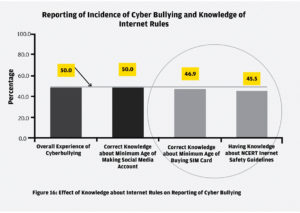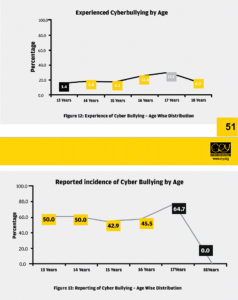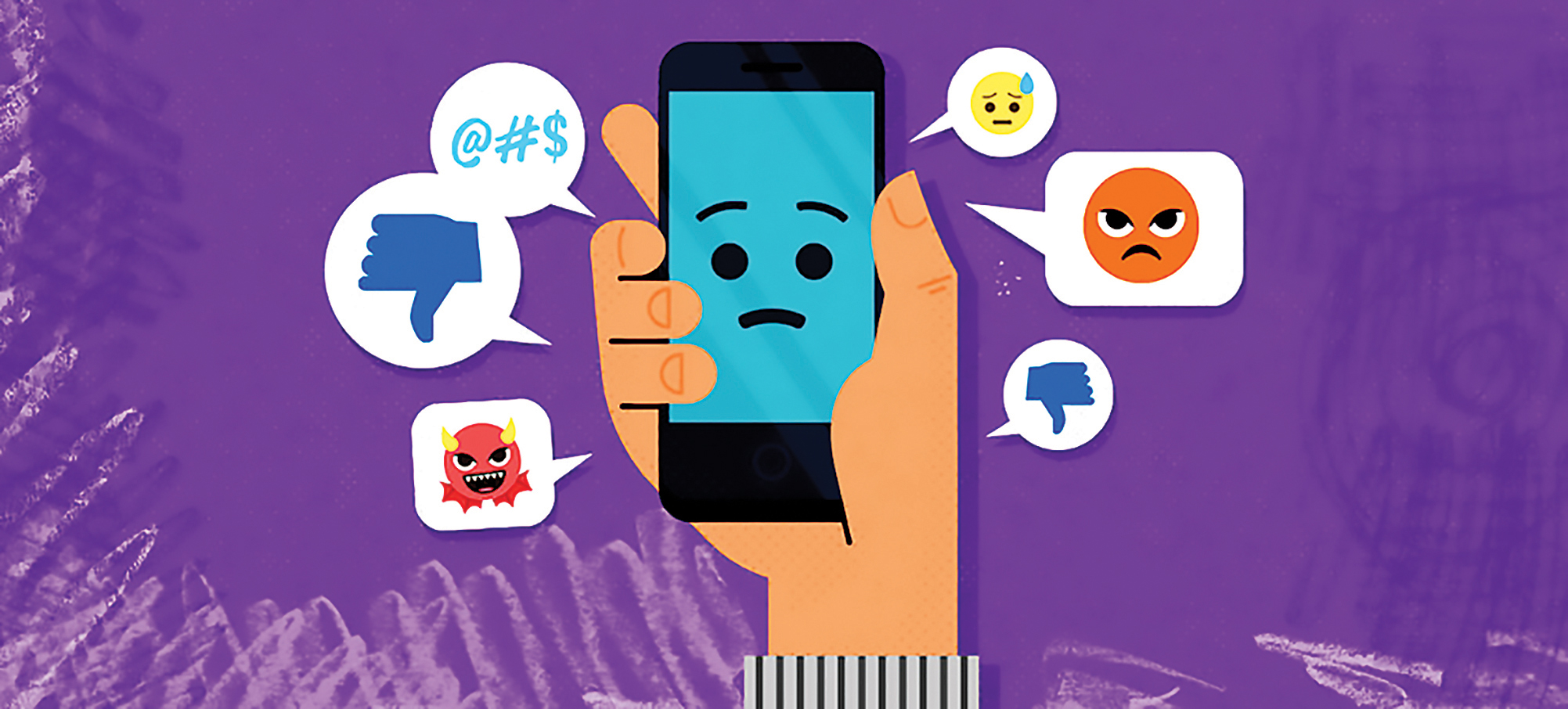Morphing, memes and derogatory comments on social media by friends can affect a teenager’s peace of mind, finds a study by CRY
WHEN ANSHIKA came to Delhi from Jaipur, she was excited about living an adventurous life in a new city. An Instagram lover, she was very fond of posting pictures. Once a friend took her picture and morphed it a bit to post it in the WhatsApp group of her classmates as a meme.
Initially, it was fine with her but then it became a trend in the group, with all other friends posting memes on her.
She then felt vulnerable and suffered from low self-esteem, so much so that she left the group and deleted all the contacts of her old friends. She however, did not tell anyone about it back then. When she got to know that cyber bullying is a crime, she gathered the courage to speak about it with her family. It took more than a month for her to get over this trauma.
Another teenager, Bhaskar was in class 9 when his father bought him a new smartphone. He made his Facebook ID on it and added over a thousand friends. One day when he posted his image on facebook, he saw nasty comments about his body and looks. It deeply affected him, after which, he stopped posting his images on social media.
Cyber bullying seems a new normal as we live in the time of Twitter trolling, but it can destroy a person’s psyche. Our society does not sensitise us about it. Cyber bullying only comes to light when a target takes dire actions, while those who are suffering from it in day-to-day life get overlooked. A recent study conducted by CRY (Child Rights and You), a non-governmental organisation, reveals that one out of every 10 teenagers, faces online bullying and only half of them report this to anyone.
Overall, 9.2% teens face cyber bullying, of whom 9.5% are boys and 8.6% girls. Reporting a bullying instance is very important, when a teen faces bullying in his personal space. But unfortunately, it doesn’t happen. “Cyber bullying has both short term and long-term impact. The short term impactincludes poor academic performance, insomnia, anxiety among others and long-term impacts can be risk of substance abuse, self-destructive behaviour, chronic depression.” says psychotherapist Deepali Rao.
Teens grow up around gadgets and in metro cities where parents are often out for work, they tend to spend a lot of time on social media. They make their persona around their online image. In this context, cyber bullying has a huge psychological impact on a teen.

While mocking of photos posted was among the most common forms of cyber bullying. CRY found out that there were instances of various kinds of bullying. “In-depth qualitative analysis revealed a few instances where a group of students shared that they had posted a morphed photograph of their friend for fun and he was fine with the meme until a blackmailer started threatening him. Similarly, there were instances where a picture was shared and a child had to face nasty and threatening comments,” says Soha Moitra, Regional Director (North) of CRY.
Cyber bullying is a form of harassment through electronic communication at various platforms using social media, chat rooms and gaming platforms. In the age of social media, when internet memes are ‘cool’ and people do not realise how it would affect the mental well-being of the person, who is being morphed and made fun of, it is really tough to set boundaries on a certain type of behaviour. And due to dearth of knowledge amongst teens, cyber bullying is not seen as an issue. Due to these reasons, the Union Ministry of Women and Child Development has also created a separate email address where complainants can file an appeal against abusive or hateful behaviour. There are also laws that deal with hateful messages online, Section 66A of The Information Technology Act 2000, amended again in 2008 deals with sending offensive messages on electronic communication devices. Any information that is grossly false or has menacing character shall be punishable for a term which may be extended to three years with a fine.
CRY’s report also says that ownership of mobile, duration of use of internet and social media accounts has bearing on online bullying. One-third of those who have mobiles face bullying as against 9.2% overall. Even among those who do not have social media, 2.9% face cyber bullying, as they had accessed social media through either parents’ or a siblings’ phones.

NCERT has guidelines for internet safety, but not all students are aware of it. “The study revealed that around 35% of the respondents had knowledge about the NCERT Internet Safety Guidelines, which means that they might have been sensitised about it in schools or any other educational platform.” said Moitra. When Patriot talked to students of Kendriya Vidyalayas of Delhi at different locations, we found that only a few students were aware of Internet Safety Guidelines and they had not attended any separate class or workshop on the subject.
Interestingly, understanding of Internet Safety Guidelines among the percentage who reported cyber bullying was 45.5% as against the reporting from the overall sample that was 50%. This implies that merely hearing about any guidelines would not help.
Similarly, every fifth child has faced morphed images or videos and in that case girls are more proactive in reporting it compared to boys. “Boys have also shown tendencies and signs of ‘invulnerability’, which is more of bravado. This needs to be factored in when devising strategies for recognising and reporting of harm and risk among boys,” says Moitra.
CRY conducted the study using a 20-item questionnaire called the Young Internet Addiction Test (YIAT) developed by Kimberly Young. The study surveyed 630 teenagers (aged 13-18) across Delhi, Noida and Faridabad.





